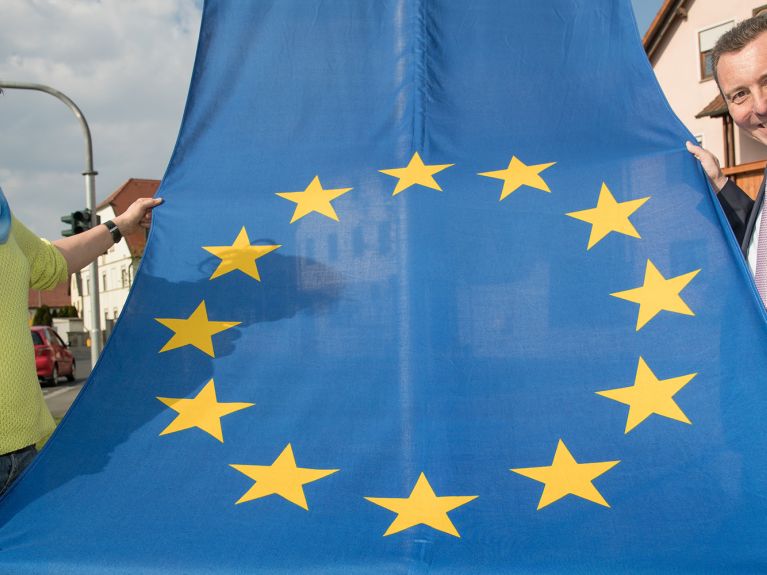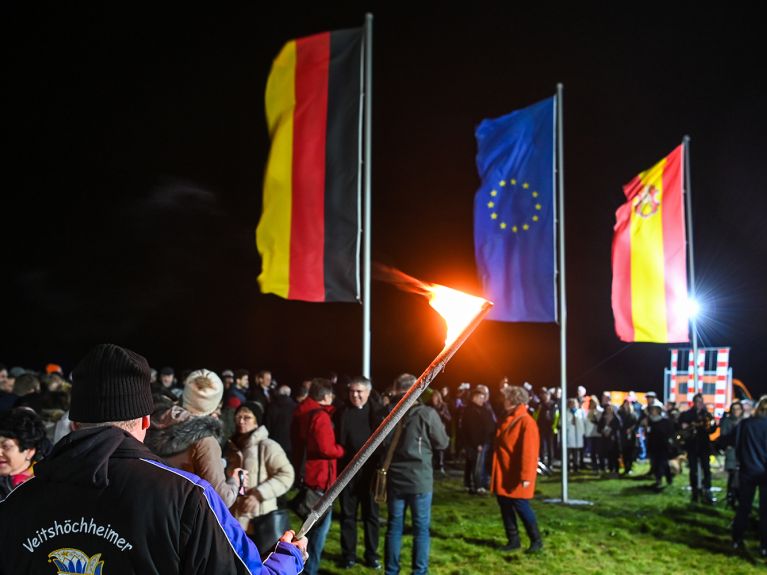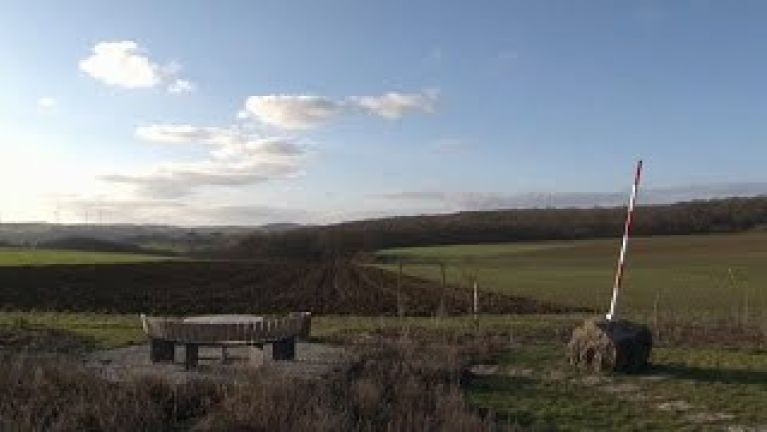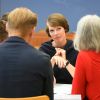The new geographical centre of the EU
Since Brexit, the geographical centre of the EU can be found in Gadheim near Würzburg. People in the village have mixed feelings about it.

A field just outside Gadheim, a village with 80 inhabitants near Würzburg. Rapeseed has been growing here up to now. Now – after Britain's exit from the European Union – this is the geographical centre of the EU. A narrow path leads to the approximately 1,000-square-metre area high above the Main valley. The local council of Veitshöchheim, to which the agricultural village of Gadheim belongs, has paved a small square there and erected a bench to sit on.
A few metres further on, three flags are flying – the flags of Veitshöchheim, Germany and Europe. A red and white survey pole rises from a boulder to mark the exact spot. Longitude: nine degrees, 54 minutes, seven seconds east; latitude: 49 degrees, 50 minutes, 35 seconds north. These coordinates have been calculated for the new centre of the EU by experts at the National Geographic Institute in Paris. The central point used to be located in the village of Westerngrund, also in Bavaria, some 60 kilometres away.

The field, which became the geographical centre of Europe overnight on 1 February 2020, belongs to Karin Kessler from Gadheim. A stroke of luck, because Europe is a matter close to the hearts of the farmer and her family. Ms Kessler's father Edmund Kilian had to go to war in 1944 at the age of 18. He was supposed to help stop the Allied attack on Nazi Germany in Normandy. Kilian was lucky, he remained largely unhurt. But the young soldier had to watch as friends died next to him in battle.
Experiences that have stayed in his mind throughout his life, experiences he has told his children and grandchildren about again and again – as a reminder of what blind nationalism can do. Right up until his death in 2019, Edmund Kilian upheld the idea of a common Europe, the idea of peace instead of hatred among peoples.
Dieses YouTube-Video kann in einem neuen Tab abgespielt werden
YouTube öffnenThird party content
We use YouTube to embed content that may collect data about your activity. Please review the details and accept the service to see this content.
Open consent formNice as it might be to have the geographical centre of the EU on her doorstep, Karin Kessler had mixed feelings during Brexit night. After all, it was the first time in the history of the Union that the centre had shifted because a country was leaving the community. It was not a cause for celebration, she says.
Jürgen Götz also drew attention to this "painful connection" during the historic night. Veitshöchheim's mayor is also a staunch European. He assures us he would be delighted to give up being the centre again one day, for example if Kosovo or Serbia were to join the EU – or the Scots were to return.
On television during the UEFA European Championship
Now, however, the first thing to do is to make the most of the newly acquired fame. The field in Gadheim will in future be an additional attraction for tourists who otherwise visit Veitshöchheim because of its location on the River Main, or to see the castle built by Balthasar Neumann with its Rococo garden, or to enjoy the Franconian carnival.
The municipality has already managed one coup: during the UEFA European Championship, which this year is being held for the first time in several cities on the continent as well as in Baku, Azerbaijan, German television will broadcast every day live from Veitshöchheim for two weeks during its breakfast programme. Because Gadheim is the geographical centre of the EU.



